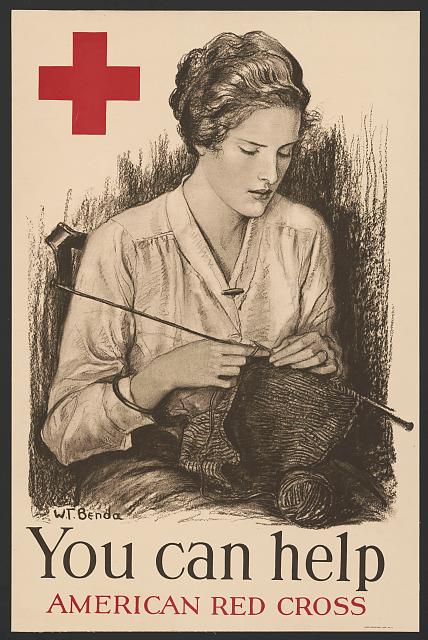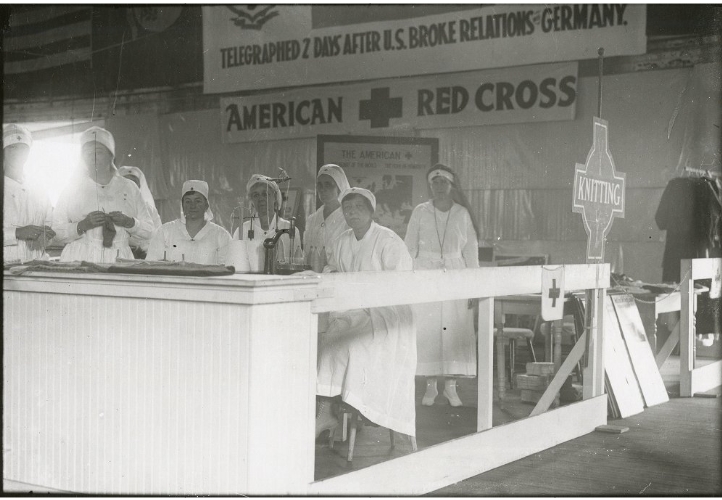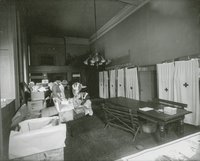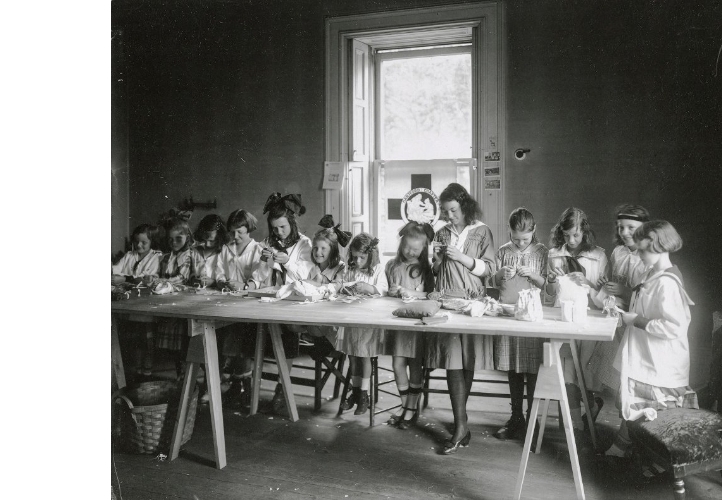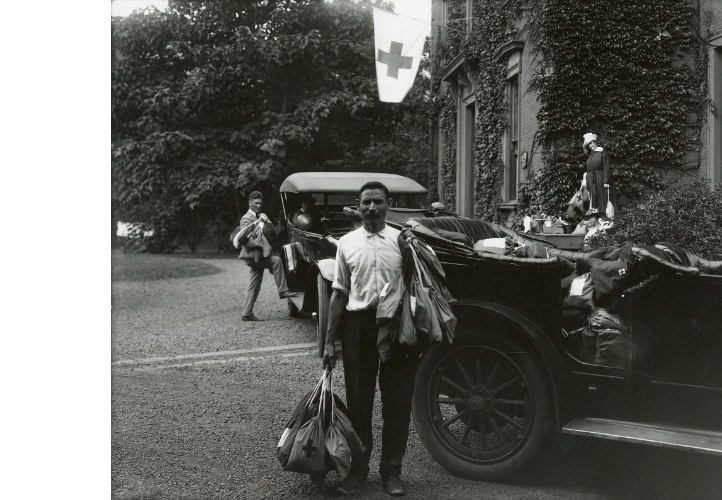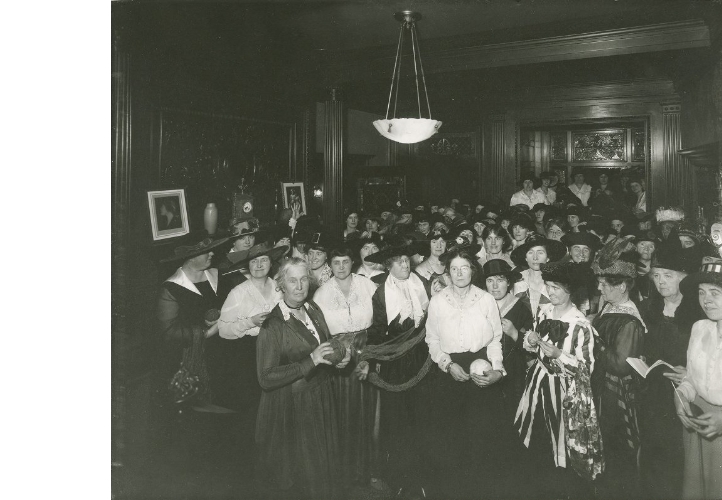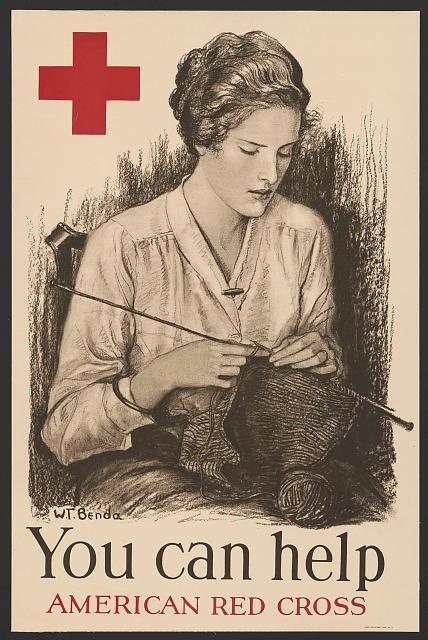Women Making Dress: in WWI
Relief aid for overseas in World War I included many different efforts by American workers from growing food to manufacture of arms and clothing. However, because so many men were fighting overseas their wives, mothers, sisters and children wanted to help their men and "do their bit." Two of the most important relief efforts undertaken by women and yound girls in Connecticut, through the American Red Cross, were making clothing and surgical dressing.
In the city of Hartford, and in surrounding towns, women and girls collectively organized and began making articles of dress for both American soldiers and those in war-stricken countries overseas.
By 1918 all of Hartford's of public and parochial schools became involved in the war relief effort. In April of 1918, the Hartford Courant wrote an article about the efforts of the Junior Red Cross working with Hartford schools. The article entitled "Hartford School Children Work For Soldiers and Refugees" showcased students from the different schools and explained how the Red Cross had intervened to create a more efficient and organized war relief effort.
Originally, individual schools were working in small groups informally knitting smaller articles of clothing such as socks. With the materials, organization and incentives provided by the Red Cross they were able to become more productive and kept track of the items they made and shipped overseas to report back to the war relief effort. All Hartford schools became members of the Hartford Chapter of the Junior Red Cross. Children who were old enough to hold knitting and sewing needles were held after school to knit and sew for the war effort. This was touted as being an excellent social activity for young people while simutaneously teaching ethics, discipline and philanthropy.
In order to become junior members of the Red Cross, young girls had to contribute at least 25 cents towards the cause. The amount of work required to achieve 25 cents was published by the Red Cross for schools and the public to follow. By providing this type of scorecard for individuals it served as an incentive and record of work done by their members. The amount of time required to create an ariticle was listed by credit value. For instance, 6" by 6" to 16" by 16" ambulance pillows were worth 10 cents and baby diapers were worth 25 cents each.
Teachers were required to choose levels of expertise from their pupils and to give them work according to their skill levels. They were also required to check the students' finished work. Every day the children would stand in line with their finished work and their names pinned to it. The teacher would inspect the articles before they were collected and stocked on shelves in a designated stock room in the school. There the articles were stacked on the floor before they were picked up by Red Cross delivery vehicles which came every week.
The"Old-Fashioned knitting bee at T.F. Garvan's" photo published by the Harftord Courant in November of 1917 demonstrated the beginning of women's war relief efforts for men in the war abroad. These efforts continued throughout the war as women workers of the Red Cross, largely associated with churches, helped to clothe soldiers and refugees in Europe.
As the war continued, and the cold and damp weather of the winter and spring in Europe came, the request for women to knit became more urgent. The Red Cross hung posters in pubic places and in department stores and in store winodows to get the word out to continue knitting socks and sweaters for the war effort.
The urgency for socks became even greater as the troops sat in trenches for long periods of time. Wearing the same socks for days and even weeks led to trenchfeet, trench fever and other illnesses borne by wet conditions.
The danger associated with the inability to have clean dry feet became so acute that it became a cause for the Red Cross. On August 10, 1918, the Hartford Courant headline on page 6 read "Red Cross Calls for Trench Socks." The Red Cross knitting committee, announced that there was a surplus of surgical dressing due to the efficient manufactured by the Surgical Dressing Headquarters and asked that volunteers to focus on knitting socks and sweaters.
Hartford Courant
